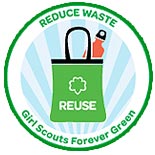Reducing Emissions Can Be Habit Forming
Every day, there are dozens of things we do without even thinking. When we wake up, we brush our teeth. Before we eat, we wash our hands. When we leave home, we lock the door. These habits, like fastening our seatbelts or looking both ways before we cross the street, keep us healthier and safer.
It’s not such a big step to build similar habits that reduce the greenhouse gas emissions that contribute to climate change. There are lots of simple habits you can acquire to reduce emissions and protect the climate. If everyone does their part, small simple steps add up to big changes.
Here are some easy ways to incorporate habits to protect the climate –
- Turn off the lights when you leave the room.
- Check your tire pressure regularly.
- Recycle bottles, instead of throwing them out.
- Print double sided, instead of single sided.
- Turn off the tap while brushing your teeth.
- When a light burns out, replace it with an ENERGY STAR light.
- Get in the habit of unplugging electronics not in use. Consumer electronics account for 15% of household electricity.
- Give your car a break. Bike, walk, carpool or take public transportation. This action not only reduces your carbon footprint, but also promotes an active and healthy lifestyle.
- Turn your thermostat a few degrees cooler in the winter, and warmer in the summer.
- Calculate your household’s carbon footprint and learn ways to reduce emissions, energy use and waste disposal costs.
Other easy things to do that can be slightly bigger investments –
- Look for the ENERGY STAR label when buying appliances/ office equipment. The typical household spends more than $2,100 a year on energy bills. With ENERGY STAR, you can save over one-third or more than $700 on your household energy bills.
- Purchase green power.
- When car shopping, compare fuel economy ratings.
If you keep following the simple steps, you can make reducing climate change a daily habit – as easy as brushing your teeth!
Click here to learn more about other ways to protect the climate, reduce air pollution and save money.
About the author: Karen Dante is an ORISE Fellow supporting the communications team in the Climate Change Division within the Office of Air and Radiation. She holds a Bachelor’s of Science in biology and psychology from Queen’s University and is currently pursuing a Master’s in Environmental Science and Policy at John’s Hopkins University.


 In celebration of their 100th anniversary, the Girl Scouts are kicking off Girl Scouts Forever Green in 2012. This global action effort is focused on waste reduction, energy conservation and rain gardens. This March the Girl Scouts will begin engaging their friends and families in making small changes to lower their carbon footprint. The girls will be replacing incandescent light bulbs with ENERGY STAR qualified light bulbs throughout their communities. On March 31st they will participate in the worldwide Earth Hour movement by turning off their lights for one hour.
In celebration of their 100th anniversary, the Girl Scouts are kicking off Girl Scouts Forever Green in 2012. This global action effort is focused on waste reduction, energy conservation and rain gardens. This March the Girl Scouts will begin engaging their friends and families in making small changes to lower their carbon footprint. The girls will be replacing incandescent light bulbs with ENERGY STAR qualified light bulbs throughout their communities. On March 31st they will participate in the worldwide Earth Hour movement by turning off their lights for one hour.